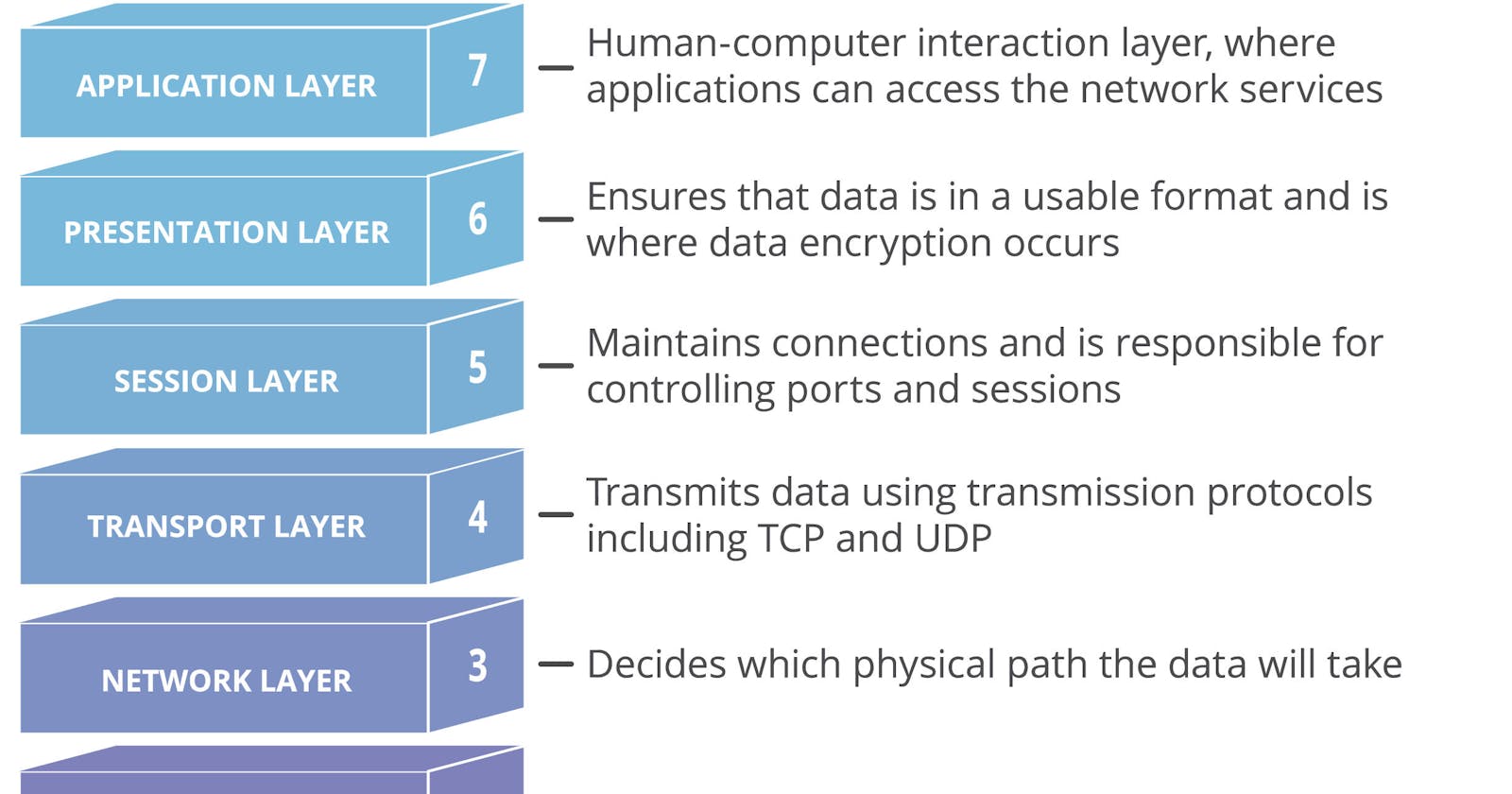The OSI model is a conceptual framework that describes the communication process between two devices in a network. The model is divided into seven layers, each responsible for a specific aspect of network communication. Understanding the technologies behind each layer is essential for network administrators and engineers to troubleshoot and optimize their networks effectively.
Layer 1: Physical Layer
The Physical layer is responsible for transmitting bits over a physical medium such as copper wire, fiber optic cable, or wireless signals. Technologies used in this layer include Ethernet, Wi-Fi, Bluetooth, and optical fibers.
Layer 2: Data Link Layer
The Data Link layer is responsible for framing and transmitting data between two devices on the same network. This layer includes technologies such as Ethernet, Wi-Fi, and Token Ring. The most common protocol used in this layer is the Address Resolution Protocol (ARP), which maps a device's IP address to its physical MAC address.
Layer 3: Network Layer
The Network layer is responsible for routing data between different networks. This layer includes technologies such as Internet Protocol (IP), Address Resolution Protocol (ARP), and Internet Control Message Protocol (ICMP). The most common protocol used in this layer is the Internet Protocol (IP), which provides unique IP addresses to each device on a network and routes data between them.
Layer 4: Transport Layer
The Transport layer is responsible for providing reliable and ordered data transfer between two devices. This layer includes technologies such as Transmission Control Protocol (TCP) and User Datagram Protocol (UDP). TCP is used for applications that require reliable data transfer, such as web browsing and file transfer. UDP is used for applications that require fast data transfer, such as streaming media.
Layer 5: Session Layer
The Session layer is responsible for establishing, maintaining, and terminating sessions between two devices. This layer includes technologies such as Remote Procedure Call (RPC), Structured Query Language (SQL), and Network File System (NFS).
Layer 6: Presentation Layer
The Presentation layer is responsible for encoding and decoding data for presentation to the user. This layer includes technologies such as Hypertext Markup Language (HTML), Extensible Markup Language (XML), and Graphics Interchange Format (GIF).
Layer 7: Application Layer
The Application layer is responsible for providing services to end-users, such as email, web browsing, and file transfer. This layer includes technologies such as Simple Mail Transfer Protocol (SMTP), Post Office Protocol (POP), and File Transfer Protocol (FTP).
In conclusion, the OSI model is a conceptual framework that describes the communication process between two devices in a network. Understanding the technologies behind each layer is essential for network administrators and engineers to troubleshoot and optimize their networks effectively. The technologies used in each layer include Ethernet, Wi-Fi, TCP/IP, SMTP, FTP, HTML, and many others. By understanding these technologies, network professionals can design and maintain robust and efficient networks that meet the needs of their users. As someone who still finds the OSI model both interesting and confusing, I hope this short write-up can help clarify for anyone who feels like me. Feel free to subscribe to my blog for more interesting cybersecurity articles.
